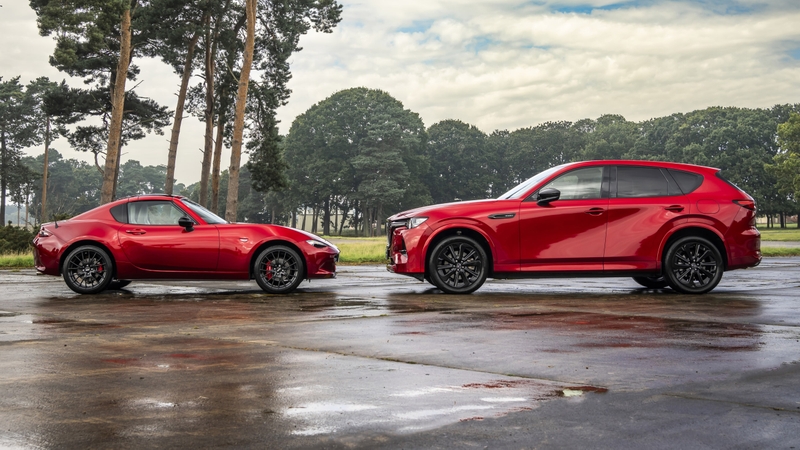

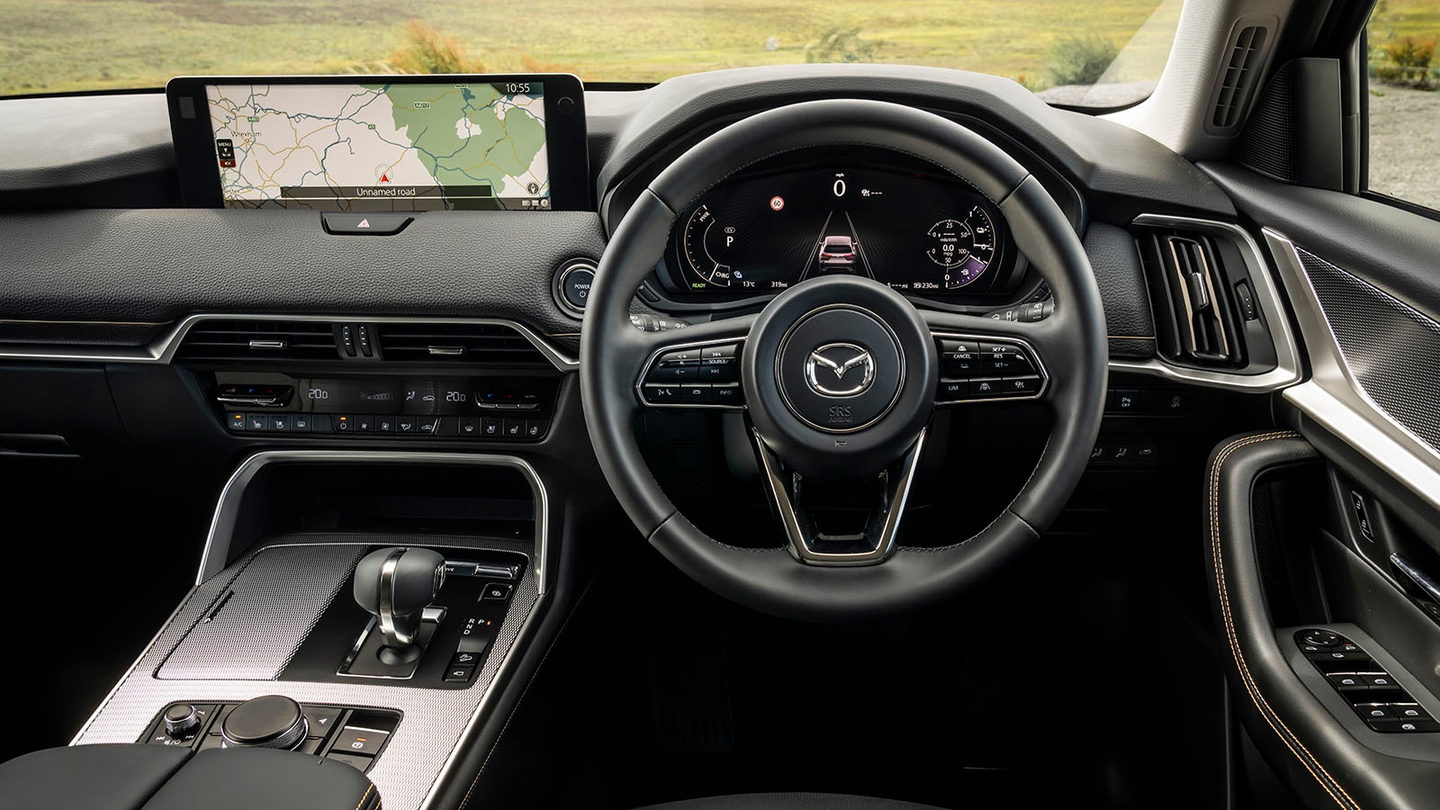

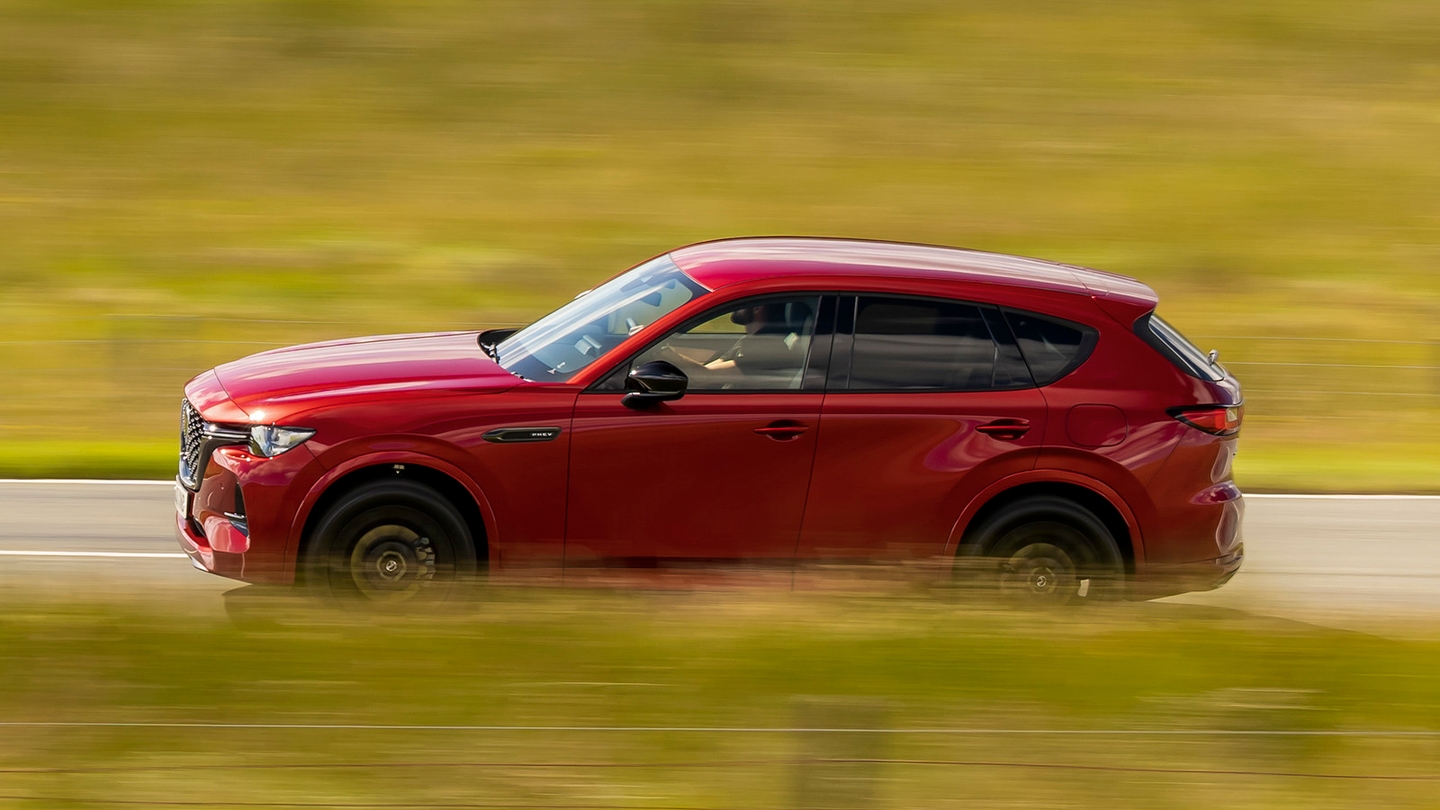
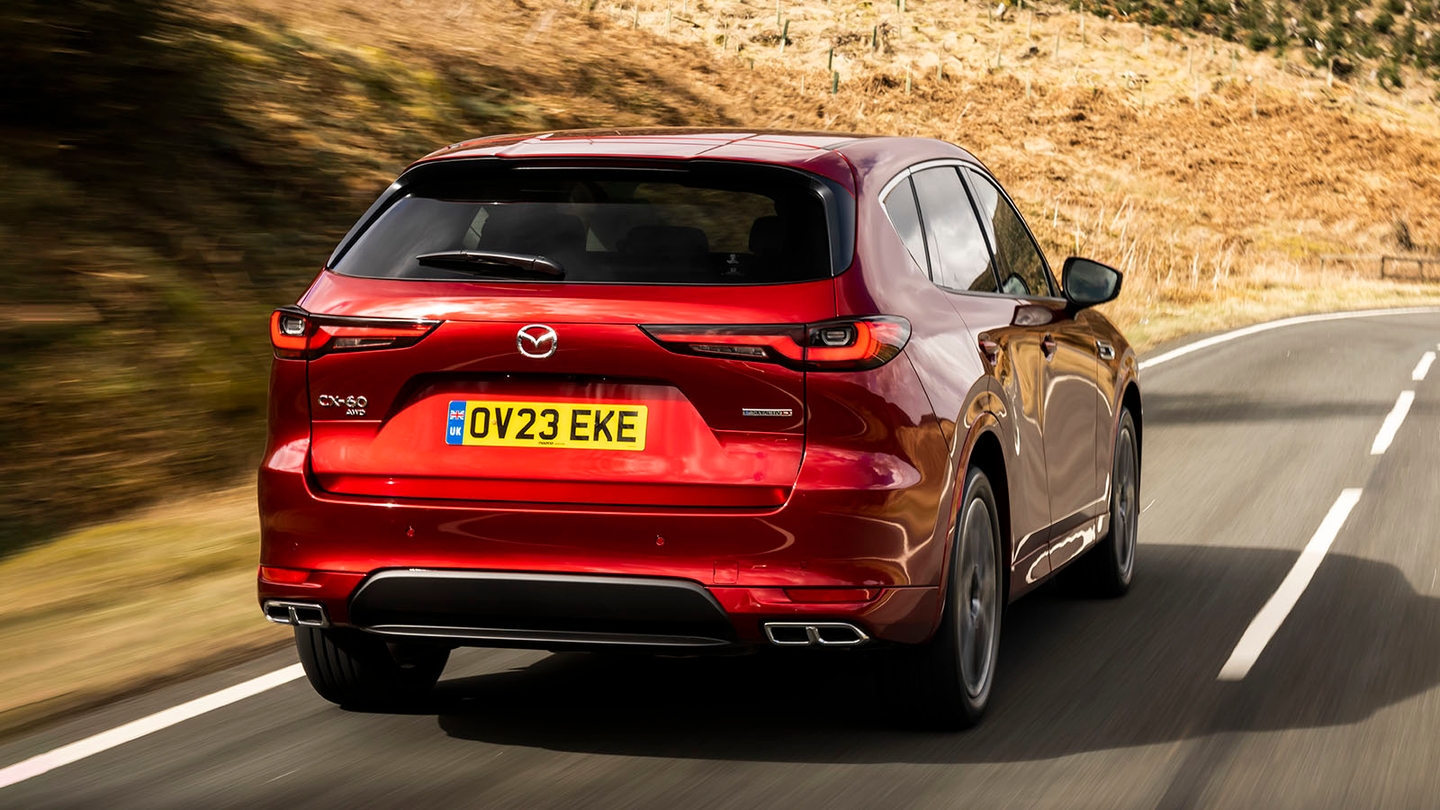



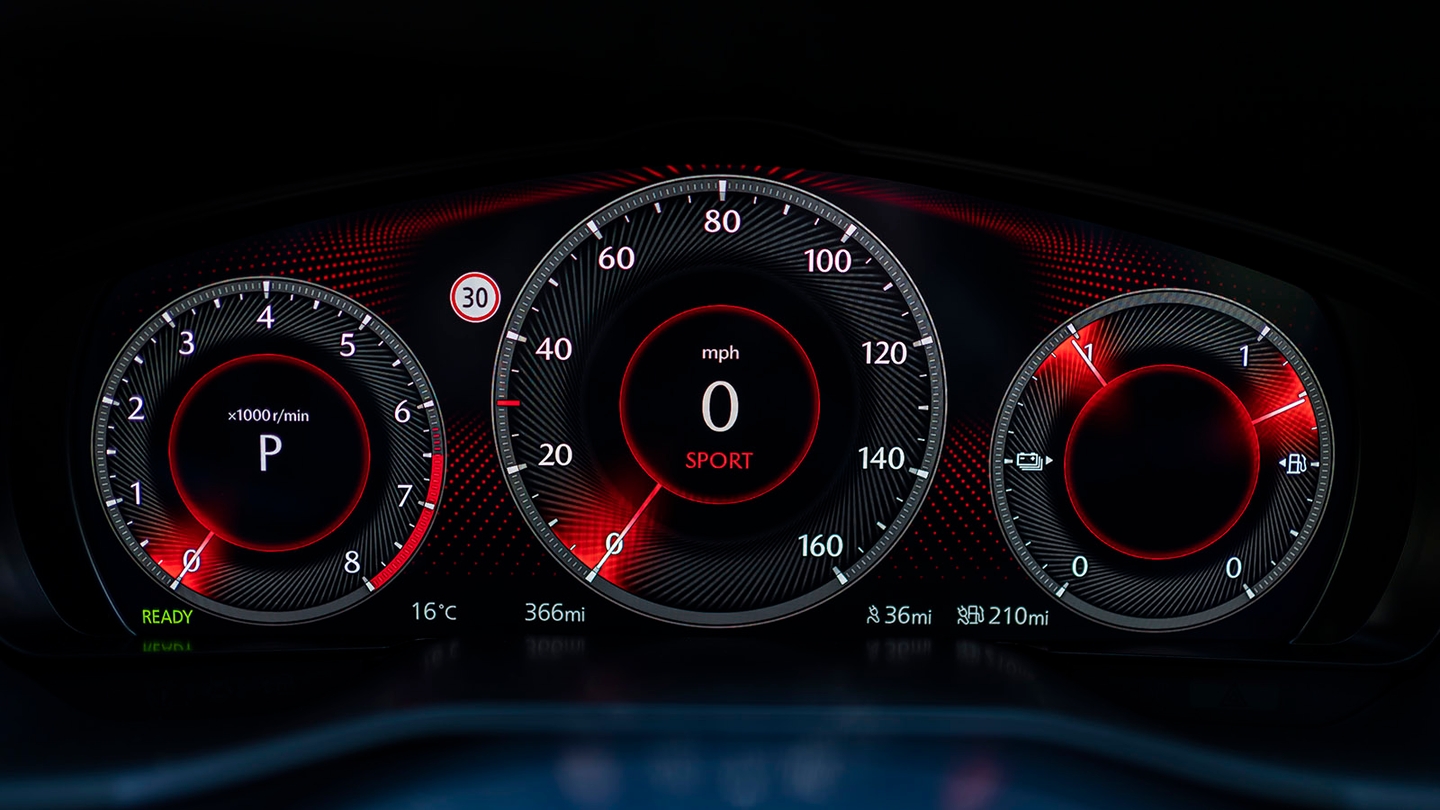
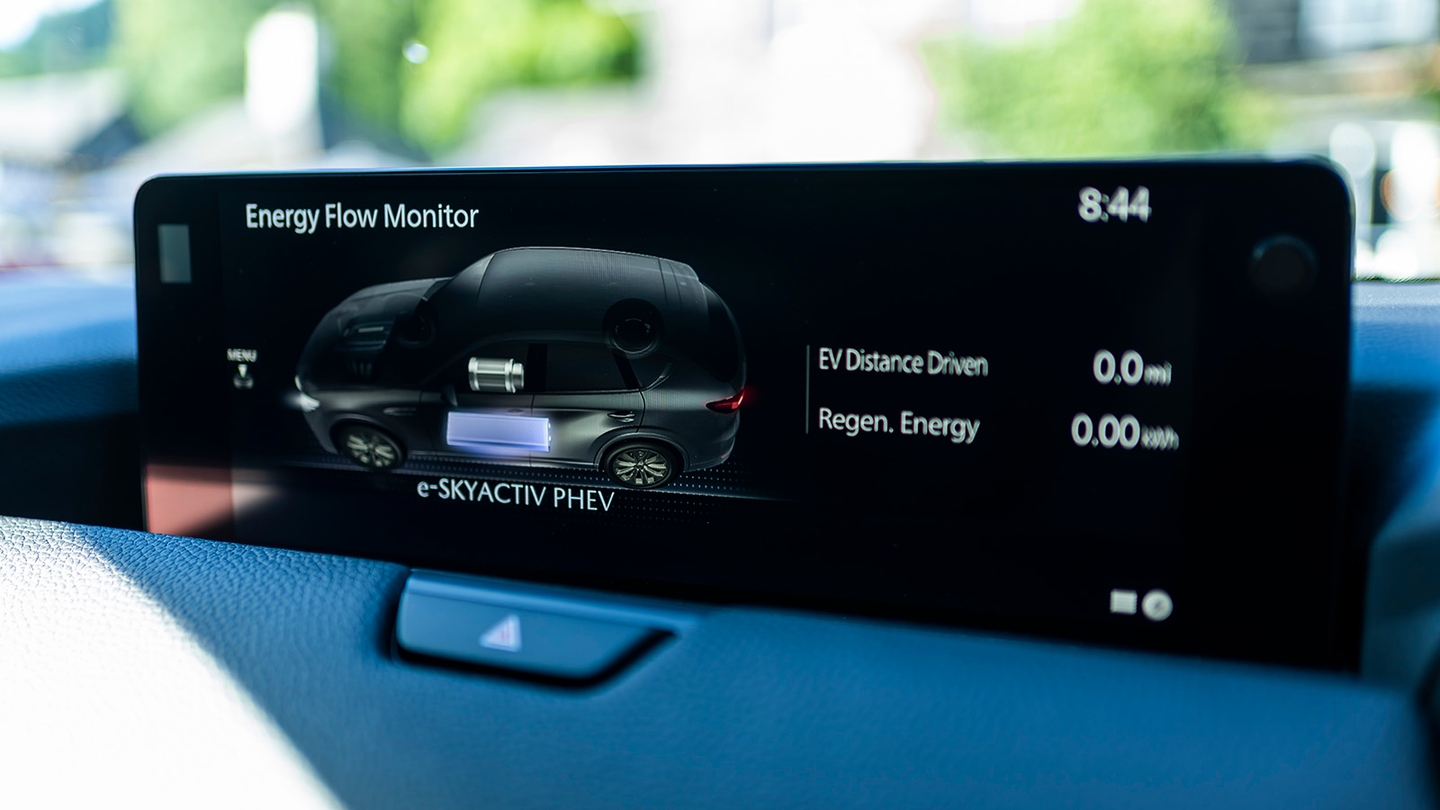



Mazda CX-60 review

Mazda isn't interested in being a mass-market manufacturer. Instead, the brand now seems dead set on competing with premium players like BMW, Mercedes and Audi.
The CX-60 is its clearest statement of intent so far. This is a big luxurious five-seater SUV with plush trimmings, loads of on-board technology, and a selection of muscular engines under the bonnet. Read on to find out if it's good enough to tempt you away from a BMW X3.
- Sharp looks
- Plush, easy-to-use cabin
- Undercuts German rivals on price
- Underwhelming PHEV engine
- Average driving experience
- Some odd infotainment choices
Should I buy a Mazda CX-60?
The Mazda CX-60 is the brand's take on a premium five-seat SUV. To which you might ask, "so what is the Mazda CX-5 supposed to be?". The answer is that, while the CX-5 is meant to compete with popular family SUVs like the Ford Kuga and Kia Sportage, the CX-60 is bigger, more powerful and even more luxurious. As a result, this is an SUV that's more interested in competing with the likes of the BMW X3, Mercedes GLC, Audi Q5 and Volvo XC60.
Those are some pretty serious cars, however, so the CX-60 needs to bring its absolute A-game if it wants to take them on. The good news is, at least superficially, Mazda has got a lot right straight out the gate. You get a bluff, imposing front end with Mazda's signature shield-shaped grille, flanked by beady headlights. Parked next to its CX-5 sibling, you recognise some of the same fluid surfacing in the CX-60's bodywork, as well as the slightly curved roofline, but the latter car feels bigger in the metal – seeming quite a bit taller and longer than the CX-5.
Entry-level Exclusive-Line cars get body-coloured door mirrors and black plastic cladding on their lower bumpers, along with 18-inch alloy wheels. Stepping up to mid-range Homura trim means arch-filling 20-inch alloy wheels, body-coloured lower bumpers and gloss black details, while top-spec Takumi adds some extra chrome details and a machined finish on the 20-inch wheels. Like most Mazdas, there's a selection of attractive colours but the firm's rich and vibrant Soul Red Metallic is the one to go for.

As strong as the exterior is, however, it's the interior that truly sells the CX-60 as a proper premium car. Material quality is excellent, with soft-touch trim across the dash and door panels, broken up by elegant aluminium-effect detailing. The design is fairly understated but feels on par with its rivals from Germany – it's less plasticky than the latest BMW X3, less chintzy than the Mercedes GLC, and isn't covered in piano-black trim like the Audi Q5. Crucially, the Mazda is also quite a bit more affordable than those cars, especially if you're searching for used CX-60s.
Another plus point here is that Mazda doesn't reserve high-end kit for the options list. Every CX-60 includes climate control, heated front seats, leather upholstery, cruise control, all-round parking sensors, a reversing camera and an automatic boot lid – plus Apple CarPlay and Android Auto for the infotainment system. Stepping up to Homura trim adds some gloss black exterior details and an upgraded Bose stereo, along with electric adjustment and ventilation for the front seats, and heating for the outer rear seats. Top-spec Takumi gets white nappa leather upholstery, maple wood cabin panelling, and a panoramic sunroof on diesel models.
There's a choice of diesel or plug-in-hybrid petrol power currently offered for the CX-60 – Mazda says a pure petrol version will join the lineup later on. Our test car came with the range-topping 2.5-litre PHEV and, based on our experience with it, we reckon most buyers will be better off with the diesel engine. The PHEV's on-paper figures are impressive but, as we'll cover in more detail later on, neither the electric component nor its petrol engine companion felt as punchy as we'd expected.
Interior and technology

The cabin is one of the CX-60's best features. Its design is simple but handsome, with care taken to make sure the surfaces you see and touch are covered with high-quality materials. As you'd expect of a modern car, there's both a central screen for the infotainment system, plus another screen behind the wheel for the driver's dials, but these are positioned less prominently than the sweeping widescreen units in BMW or Mercedes rivals. As a result, the Mazda's screens look slightly more old-fashioned but, if you feel like modern cars are becoming too much like cinema screens on wheels, you might appreciate the CX-60's more traditional approach. Find out what happened when we tested how distracting modern car interiors are.
Key touchpoints have had care and attention paid to them, too. The CX-60's steering wheel feels great in the hand with smooth, saddle-like leather and a slender rim that isn't overstuffed like those used in BMW and Ford models. Steering wheel buttons are clearly marked, too, and Mazda's avoided the temptation to fit annoying touch-sensitive controls. The stubby automatic gear selector also feels nice in your palm, with a leather covering and a reassuring 'clunk' when you change gear – although it does take a few goes to program yourself to move it side-to-side to shift in and out of park.

Another slightly unconventional feature is the CX-60's infotainment screen. Unlike basically all its rivals, the screen isn't a touchscreen – most of the time – and can only be interacted with using a rotary controller between the seats. We quite like this approach as it makes it fairly easy for the driver to navigate around the infotainment system to the option they want with minimal glances away from the road. The screen's graphics are fairly simple, too, mostly using high-contrast white text over plain black backgrounds, which makes it easy to quickly pick out the information you're looking for.
As mentioned, the screen usually doesn't work as a touchscreen, apart from when you're connected to Apple CarPlay or Android Auto and the car is stationary. Fulfil those requirements and suddenly you can navigate around menus with your finger like any other car. Bear in mind the screen doesn't support swipe or pinch gestures, however. Annoyingly, once you pull away, the touchscreen is locked off and you're forced to use the rotary controller. This controller doesn't always interact with CarPlay in the most intuitive way. Apps such as Spotify don't support the controller's up/down/left/right directional functions, and demand you spin the controller to scroll through potentially many options until you reach the one you want to click on.
Practicality

The CX-60 is bigger than the CX-5 but it's still a two-row, five-seater SUV. There's the larger CX-80 for buyers wanting seven seats. You might hope the CX-60's extra size over the CX-5 translates into more passenger space but, in practice, accommodation in the big Mazda is only good, not great. Front-seat passengers have all the space they could ask for, and plenty of elbow room thanks to the wide centre console. Rear-seat space is average for the segment. Access is reasonably easy and enough daylight makes it back there through the passenger windows, but the CX-60 has less rear legroom than the best in class.
The seats themselves are comfy in all outer positions at least and, thanks to the a reasonable amount of width on offer, even your centre-rear fifth passenger won't feel too squashed. Parents with kids in child seats will find the CX-60 easy to get on with thanks to the dual rear Isofix points and easy access through the large side doors.

As for cargo, there's a 570-litre boot with a wide opening for easy access. That on-paper figure compares pretty favourably to cars like the BMW X3 and Audi Q5 but, in the real world, the space doesn't feel that much more useful than those cars. Nevertheless, you won't struggle to get a bulky pushchair, a big dog, or a family's holiday luggage in your CX-60.
All versions come with a powered boot lid, which makes loading and unloading items a little easier. There are individual levers to fold the 40:20:40-split rear seats – two on the left, one on the right – which makes it straightforward to access the full 1,726-litre space with the rear row down.
Engines and performance

Under the bonnet, you'll find either a 3.3-litre six-cylinder diesel engine – boasting either 200hp or 254hp – or a 2.5-litre turbo petrol engine paired to a plug-in hybrid system. Both models use an eight-speed automatic gearbox as standard. Our test car came with the plug-in hybrid option, which is likely to be the most popular choice with company-car drivers thanks to its comparatively low 12% Benefit-in-Kind (BiK) tax bill. That said, other premium plug-in hybrids such as the Lexus RX and Mercedes GLC both achieve even lower BiK rates, so they might be a better bet for business buyers.
Nevertheless, the 327hp PHEV engine feels like a decent match for the CX-60's fairly substantial mass. In ideal circumstances, you can expect more than 180mpg or an electric-only range of 39 miles. Despite its healthy on-paper output, however, it never feels as fast as you'd hope given its claimed 5.8-second 0-62mph time.
Part of that is down to the PHEV's electric component. It doesn't deliver the instant low-speed punch we've come to expect from other electrified models – instead working more as a backup to the 2.5-litre petrol engine. We're confident the engine is as powerful as it claims to be, but it needs to spin up to speed to deliver most of its horsepower. So, without much obvious low-down assistance from the electric motor, the PHEV feels like it takes a few beats before it actually starts accelerating as hard as you'd expect.

For most buyers then, we reckon the diesel engine is the better choice. It's a sizeable 3.3-litre straight-six unit, which feels like something of an anachronism among today's downsized, electrified options. Entry-level versions make 200hp and drive just the rear wheels, while upgraded models jump to 254hp and all-wheel drive. All that displacement means these engines deliver most of their substantial torque low-down, helping diesel CX-60s feel muscular off the line. Of course, claimed mpg figures in the 50s are nothing compared to the PHEV's efficiency, but you don't need to recharge the diesel models to hit those numbers.
If you're planning on towing with your CX-60, again the diesel engines seem like the obvious choice for their low-down grunt and long-range efficiency. However, we have to give some props to the PHEV model here as it matches the 2,500kg max braked towing capacity of the diesel engines – something most plug-in models are unable to replicate.
Driving and comfort

Mazda has a reputation for building sharp-handling, sporty cars. Sadly, the CX-60 falls a little short of the high bar the brand has set itself. Immediately, it leaves an iffy impression just manoeuvring out of a parking space. The steering at low speeds is heavy – way too heavy – so much that you might find yourself heading to the options list to make sure Mazda actually remembered to fit power steering. It means parking and low-speed driving takes more effort than you'd expect to heave the wheel in the desired direction.
As speeds pick up, the steering's weight becomes less of an issue, but you're still not rewarded with any kind of sporty driving experience. You sense the car's weight rocking about during faster cornering and quick direction changes, accompanied by a reasonable amount of body roll. This is a little disappointing as most other Mazdas we've driven have been quite entertaining to hustle down a twisty road, but the CX-60 just feels a bit heavy and it isn't as fun as a BMW X3.

On the plus side, however, that weight does infer a sense of stability, so the big Mazda feels secure at motorway speeds and over bouncy roads. Refinement is also pretty good, with most wind and tyre noise being tuned out, and just the odd audible thump from the suspension.
The ride quality isn't too bad, either. Most heavy SUVs in this class are a little compromised by their heft and tall centre of gravity, but the CX-60's suspension dampens most big thuds before they make it to the base of your seat. Vibrations over scruffy roads are fairly well suppressed, too, even in our test car equipped with the larger 20-inch wheels. The BMW X3 is still the overall dynamic leader in this class, but the CX-60 rides well enough to be an easygoing companion on long journeys.



























































